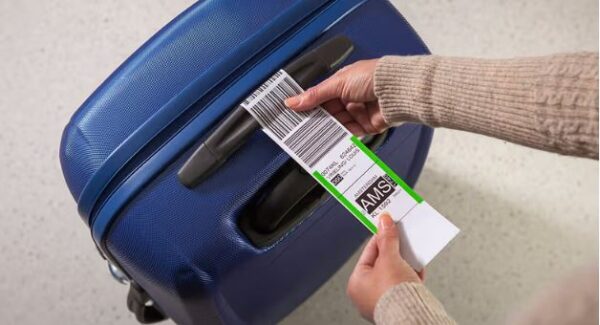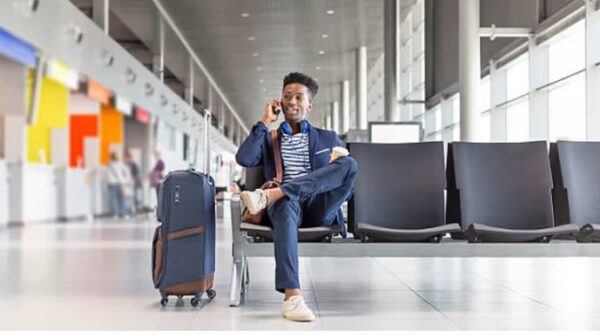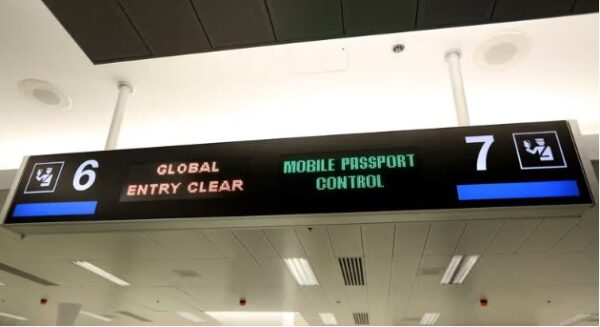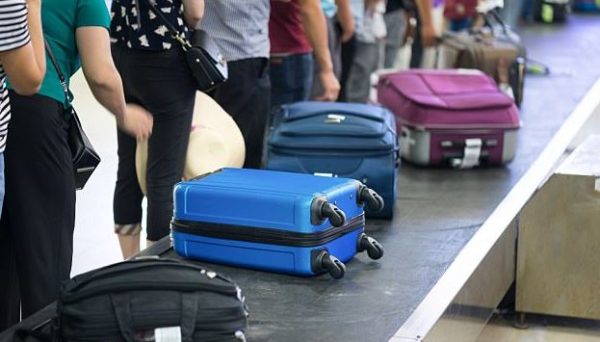Lifestyle
Everything you need to know about using AirTags to track luggage

Airlines have a knack for losing Beverly Ayotte’s checked luggage. When she heard travellers were using Apple AirTags to track their belongings, she immediately bought two of the coin-size devices and dropped them in her bags before embarking on a Panama Canal cruise.
Sure enough, on her return to Philadelphia, American Airlines lost her baggage.
“I knew something was wrong,” said Ayotte, a retired college professor from Ocean View, New Jersey. “The airline said our luggage was on the bus from Philadelphia to Atlantic City, but I could see that it wasn’t.”
Thanks to new technology, pinpointing the location of your belongings is now affordable and practical for many travellers.
Apple introduced AirTag in early 2021. It isn’t the first luggage tracking system, but it is arguably the easiest to use.
But, as Ayotte’s story shows, using a tracker won’t necessarily rescue your suitcase. Knowing the whereabouts of your bags can turn into a comedy of errors that leaves you wondering why the airlines don’t lose more.
Last summer, when airlines separated hundreds of thousands of bags from their owners, some travel blogs suggested that AirTags would end lost luggage.
But in the months since then, it’s become clear that the issue is a little more complicated. For starters, AirTags work only with an iPhone. Then there were rumours that several airlines had banned tracking devices.
And buying a tracker can lead to other questions: Where, exactly, do you put one in your luggage? How many trackers do you need? And do you have to label your bags?
Here are the answers:
Where do missing bags go?
After buying and activating her AirTags, Ayotte began following her luggage through her departing flight and cruise. On the way back, when American Airlines claimed her luggage was on a bus for Atlantic City, her iPhone told her otherwise.
“The tags located both pieces in Philadelphia,” she says.
Ayotte called American. A representative claimed the bags were in Miami, where her flight had originated. After a long wait, the airline delivered her husband’s luggage.
But an AirTag still showed her luggage in Philadelphia. Her airline claimed it was in Austin.
“This went on for days,” she says. “Finally, my luggage started moving again. It stopped at a private residence near the Philadelphia airport.”
Ayotte thought someone had stolen her bag, but a quick online search revealed that the home belonged to a luggage delivery service. A day later, someone showed up at her doorstep with her long-lost luggage.
Ayotte’s case is common for tracked luggage. Her AirTag allowed her to keep tabs on the airline as it tried to find and recover her bag. And if the airline had declared her luggage lost, she could have provided it with a location.
When an airline declares your bag lost, it stops searching for your property and will reimburse you for the value of your possessions. When there’s no way of identifying the owner, bags tend to end up at the Unclaimed Baggage store.
Have AirTags reduced lost luggage?
Not yet.
In 2021, the first year the tracking devices were available, domestic airlines lost an average of 5.07 bags per 1 000 passenger enplanements, according to the Transportation Department – up 23% from 2020.
And for the first nine months of 2022, the number of mishandled bags rose to 6.1 per 1 000 enplanements, up another 20%.
There are no reliable surveys on the effect of passenger baggage tracking. But change takes time.
Some luggage, like the new Un-Carrier On that T-Mobile and Samsara introduced late last year, comes with a special case for an AirTag. That could encourage more widespread adoption, potentially leading to less lost luggage.
What if you don’t have an iPhone?
You have two practical options. The most recommended AirTag substitute is the Tile tracker, which works with iOS and Android. Tile requires a premium service for services like alerts or 30-day location history.
Barry Graham, a sales manager and frequent business traveller based in Silver Spring, Marylan., has used a Tile to track his luggage through his Android phone.
“Thankfully, we haven’t lost anything since we started using it,” he says. “But it has helped us to locate things that were in the home and we didn’t want to waste time looking for them. I think it’s a great device.”
Your second option is using AirTags with an Android phone using a free app called Tracker Detect.
However, the AirTag functionality is limited on an Android phone, so you’re better off with a Tile if you don’t own an iPhone.
Have airlines banned AirTags and other tracking devices?
No. Last autumn, German carrier Lufthansa left some passengers with the impression that it had banned tracking devices when it said on Twitter that it considered activated AirTags to be dangerous. But it quickly clarified that they were allowed
Air New Zealand reportedly banned luggage trackers in November, but according to its site, trackers may be used as long as the battery does not exceed 0.3g of lithium metal; AirTags contain only 0.1g.
Where should you put an AirTag in your luggage?
“Generally speaking, it’s best to put the device in a pocket or pouch that is easily accessible and out of sight,” advises Michael Xavier, the founder of the technology site Insider Techie.
“You’ll want to make sure that the device is securely attached to the bag, as it could become dislodged during transit.”
Most luggage has a side pouch you can close with a zipper. The less conspicuous, the better. If someone tries to steal your luggage, they’ll look for any tracker to ensure no one is following them.
How many trackers do you need to adequately track your luggage?
One per bag. An AirTag battery lasts about a year, according to Apple. If you’re concerned about the AirTag running out of power or failing, you can always add a second one to your luggage for redundancy.
Do you have to label your luggage?
Yes. Most airlines have sophisticated tracking systems. The luggage tag has a bar code that connects your luggage to your airline reservation, allowing it to reunite you with your luggage if it’s lost. But the systems are not perfect.
Sometimes airlines mislabel luggage. And occasionally, both the luggage tag and the smaller sticker with a redundant bar code come off the bag, rendering the tracking system useless.
When that happens, the airline will go looking for a conventional luggage tag with your name and phone number.
Security experts say you should avoid putting your street address, because criminals who pilfer your luggage may also show up at your house and break in it when you’re not home.
Best bet: Attach a label to the outside and place a business card or second luggage tag on the inside of your bag – for safety.
The airline has no incentive to track your bag more closely if it has a luggage tag attached, but it will help identify your property if it gets lost.










